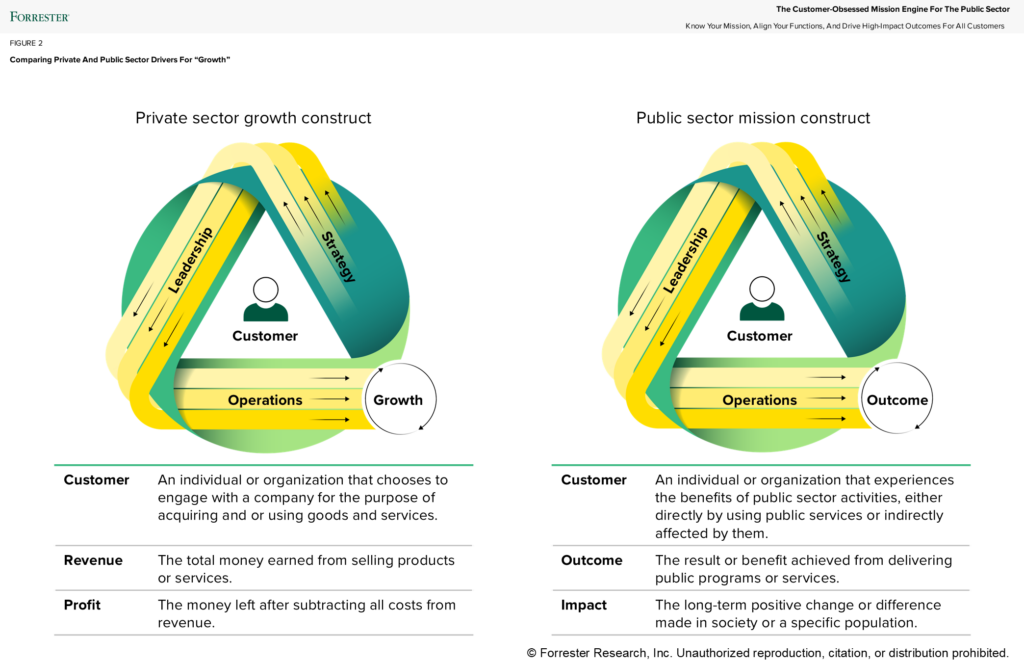From Fixed Routes To Adaptive Navigation: Introducing Forrester’s Customer-Obsessed Mission Engine
Remember the good old Garmin Nüvi?! My dad had one. Awesome piece of tech 20 years ago. But I’d be very surprised if you still relied on it as your road navigator today in 2025. The thing is many governments still operate like a basic satnav device — they set policies, design programs and services based on initial planning, then execute them without much flexibility. Even when real-world conditions change — economic and geopolitical shifts, social and demographic changes, and scientific and technological advancements — government organizations often stick to the original course, even if it no longer serves people well.

Now think of a smart navigator app like Waze on Carplay or Android Auto — one that continuously monitors real-time road conditions, learns from past trips, and prioritizes getting you to your goal. Just as a smart navigator helps you arrive on time — not just follow a set route — a customer-obsessed mission engine’s purpose is to help public sector leaders find better ways to achieve mission success by constantly understanding customers (diverse range of stakeholders including individual citizens, residents, and tourists; businesses; foreign investors; and other governments) and maximizing value for them. In the long-term, a customer-obsessed mission engine drives positive change in society, such as economic growth and stability, social equity and well-being, and public safety and resilience.
Customer Obsession Is Vital In The Public Sector
Why bother? Customer obsession — putting the customer at the center of your leadership, strategy, and operations — enables organizations to sense and respond to market circumstances. In the private sector, this flexibility ensures customer satisfaction, employee engagement, and revenue growth in any economic climate. To achieve mission success, public organizations can adapt the principles of the growth engines of top private sector companies to the government context. Ultimately, customer obsession is vital in the public sector because it helps:
- Drive behaviors that power mission performance. This is achieved by following the government’s advice and directives, engaging with the government for authoritative information, using optional services, and speaking positively about the government and its services.
- Streamline processes that frustrate customers and waste resources. This helps to align resources with the actual needs and expectations of the customers they serve, government organizations.
- Design resilient services. This is done by integrating disaster recovery and worst-case-scenario planning into customer journeys.
Understand Your Customer-Obsessed Mission Engine
Forrester defines a customer-obsessed mission engine as:
Continuous service delivery that achieves high-impact outcomes by maximizing value to people, businesses, and other government bodies. It advances mission objectives by aligning internal functions such as communications, customer experience, digital, and technology around these customers.
There are three versions of the customer-obsessed mission engine. The one you need depends on whether your organization delivers first-response or front-line service in a government-to-customer space; provides regulatory services or industry support in the government-to-business space; or is tasked with internal coordination or cross-jurisdictional relations that require you to build a government-to-government mission engine.
Public sector organizations with strongly aligned service delivery functions — policy development, customer experience (CX), marketing and communications, and digital business — are more likely to run a customer-obsessed mission engine that improves service delivery. For details about customer obsession, as well as a full list of our recommendations for CX and technology leaders in government on how to align internal functions with customer value, check out our report, The Customer-Obsessed Mission Engine For The Public Sector.
Forrester clients can also schedule a guidance session with me, Sam, or one of our colleagues who contributed to this research.

